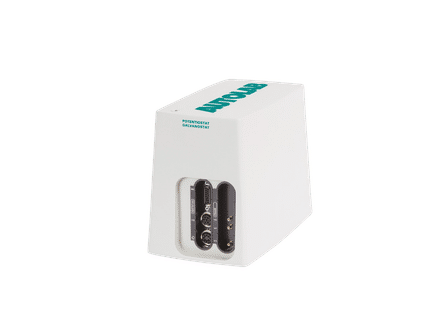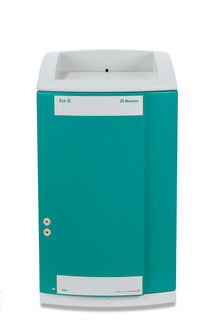|
| This article contains Chinese text.
Without proper rendering support, you may see question marks, boxes, or other symbols instead of Chinese characters.
|
In traditional Chinese philosophy, natural phenomena can be classified into the Wu Xing (Chinese: 五行; pinyin: wǔxíng), or the Five Elements, also translated as five phases, five movements or five steps.
The elements are:
- metal (Chinese: 金; pinyin: jīn, Vietnamese: kim)
- wood (Chinese: 木; pinyin: mù, Vietnamese: mộc)
- water (Chinese: 水; pinyin: shuǐ, Vietnamese: thủy)
- fire (Chinese: 火; pinyin: huǒ, Vietnamese: hoả), and
- earth (Chinese: 土; pinyin: tǔ, Vietnamese: thổ).
The system of five elements was used for describing interactions and relationships between phenomena. It was employed in many fields of early Chinese thought, including seemingly disparate fields such as geomancy or Feng shui, astrology, traditional Chinese medicine, music, military strategy and martial arts. The original foundation is based on the concept of the Five Cardinal Points.
Traditional Taijiquan schools relate them to footwork and refer to them as five "steps". The system is still used as a reference in some forms of complementary and alternative medicine and martial arts.
Cycles
The doctrine of five phases describes two Cycles of Balance, a generating or creation (生, shēng) cycle and an overcoming or destruction (克, kè) cycle of interactions between the phases.
Generating
- Wood feeds Fire;
- Fire creates Earth (ash);
- Earth bears Metal;
- Metal collects Water and
- Water nourishes Wood.
Overcoming
- wood parts earth;
- earth absorbs water;
- water quenches fire;
- fire melts metal and
- metal chops wood
There are also two Cycles of Imbalance, an overacting cycle (cheng) and an insulting cycle (wu).
Cosmology and feng shui
Main article: Feng Shui
According to Chinese thought the structure of the cosmos mirror the five elements, and each has a complex series of associations with different aspects of nature, as can be seen in the following table. In the ancient Chinese form of geomancy known as Feng Shui practitioners all based their art and system on the five elements (Wu Xing). All of these elements are represented within the Bagua. Associated with these elements are colors, seasons and shapes; all of which are interacting with each other. [1]
Based on a particular directional energy flow from one element to the next, the interaction can be expansive, destructive, or exhaustive. With proper knowledge of such aspect of energy flow will enable the Feng Shui practitioner to apply certain cures or rearrangement of energy in a beneficial way.
| Element | Wood | Fire | Earth | Metal | Water
|
| Color
| Green | Red | Yellow | White | Blue
|
| Direction
| east | south | Center | west | north
|
| Planet
| Jupiter | Mars | Saturn | Venus | Mercury
|
| Heavenly creature
| Azure Dragon
青龙 or 青龍 | Vermilion Bird
朱雀 | Yellow Dragon or Yellow Qilin
黃龍 or 黃麟 | White Tiger
白虎 | Black Tortoise
玄武
|
| Heavenly Stems
| 甲, 乙 | 丙, 丁 | 戊, 己 | 庚, 辛 | 壬, 癸
|
| Phase
| New Yang | Full Yang | Yin/Yang balance | New Yin | Full Yin
|
| Energy
| Generative | Expansive | Stabilizing | Contracting | Conserving
|
| Season
| Spring | Summer | Change of seasons
(Every third month) | Autumn | Winter
|
| Climate
| Windy | Hot | Damp | Dry | Cold
|
| Development
| Sprouting | Blooming | Ripening | Withering | Dormant
|
| Livestock
| dog | sheep/goat | cattle | chicken | pig
|
| Fruit
| plum | apricot | jujube(dates) | peach | chestnut
|
| Grain
| wheat | beans | rice | hemp | millet
|
Bagua
Main article: Bagua (concept)
The elements have also been correlated to the eight trigrams of the I Ching:
| Element | Wood | Fire | Earth | Metal | Water
|
| I Ching
| Wind, thunder | Fire | Earth, mountain | Sky, lake | Water
|
| Trigrams
| :|| (☴ 巽 xùn) |:: (☳ 震 zhèn)
| |:| (☲ 離 lí)
| ::: (☷ 坤 kūn) ::| (☶ 艮 gèn)
| ||| (☰ 乾 qián) ||: (☱ 兌 duì)
| :|: (☵ 坎 kǎn)
|
Chinese medicine
-
According to Chinese medical theory, each organ is associated with one of the Five Phases. It is believed to be more efficacious to treat an organ during a particular time period appropriate to it. The citation order of the Five Phases, i.e., the order in which they are cited in the Bo Hu Tong and other Han dynasty texts, is Metal, Wood, Water, Fire, and Earth. The organs are most effectively treated, according to theory, in the following four-hour periods throughout the day, beginning with the 3 a.m. to 7 a. m. period: Metal organs (see the list below), Earth organs, Fire1 organs, Water organs, Fire2 (the "non-empirical" Pericardium and Triple Burner organs), and Wood organs, which is the reverse of the citation order (plus an extra use of Fire and the non-empirical organs to take care of the sixth four-hour period of the day). These two orders are further related to the sequence of the planets going outward from the sun (Mercury, Venus, Mars, Jupiter, Saturn, or Water, Metal, Fire, Wood, and Earth) by a star diagram similar to the one shown above. [2]
| Element | Wood | Fire | Earth | Metal | Water
|
| Planet
| Jupiter | Mars | Saturn | Venus | Mercury
|
| Mental Quality
| Sensitivity | Creativity | Clarity | Intuition | Spontaneity
|
| Negative Emotion
| anger, frustration | over-excitation | worry, anxiety | grief, sadness | fear, lack of will
|
| Positive Emotion
| Patience | Joy | Empathy | Courage | Calmness
|
| Zang (yin organs)
| liver | heart/pericardium | spleen/pancreas | lung | kidney
|
| Fu (yang organs)
| gall bladder | small intestine/San Jiao | stomach | large intestine | urinary bladder
|
| Sensory organ
| eye | tongue | Mouth | nose | ears
|
| Body Part
| Tendons | Pulse | Muscle | Skin | Bones
|
| Body Fluid
| Tears | Sweat | Saliva | Mucus | Urine
|
| Finger
| index finger | middle finger | thumb | ring finger | little finger
|
| Sense
| sight | speech | taste | smell | hearing
|
| Taste
| sour | bitter | sweet | pungent | salty
|
| Smell
| Rancid | Scorched | Fragrant | Putrid | Rotten
|
| Life
| birth | youth | adulthood | old age | death
|
Chinese astrology
Main article: Chinese astrology
Chinese astrology is based upon the interaction of the five elements with the twelve signs of the Chinese zodiac, to produce the well-known 60 year cylce of signs.
| Element | Wood | Fire | Earth | Metal | Water
|
| Heavenly Stem
| Jia 甲
Yi 乙 | Bing 丙
Ding 丁 | Wu 戊
Ji 己 | Geng 庚
Xin 辛 | Ren 壬
Gui 癸
|
| Birth year ends with
| 4, 5 | 6, 7 | 8, 9 | 0, 1 | 2, 3
|
For example, assume someone is born in the year 1953, the year of the Snake. Because her birth year ends with 3, her element is Water; therefore, she was born in the year of the Water Snake.
Music
Main article: Chinese music
The Yuèlìng chapter (月令篇) of the Lǐjì (禮記) and the Huáinánzǐ (淮南子) make the following correlations:
| Element | Wood | Fire | Earth | Metal | Water
|
| Colour
| Green | Red | Yellow | White | Blue
|
| Direction
| east | south | center | west | north
|
| The Chinese Five-note Scale
| jué 角 (mi) | zhǐ 徵 (so) | gōng 宮 (do) | shāng 商 (re) | yǔ 羽 (la)
|
(Notes:
- The Chinese word 青 qīng, traditionally translated as azure in this context, includes the range in the spectrum from green to blue, with shades down to black.)
- In modern Western music, various seven note or five note scales (e.g., the major scale) are defined by selecting seven or five frequencies from the set of twelve semi-tones in the Equal tempered tuning. The Chinese "lǜ" tuning is closest to the ancient Greek tuning of Pythagoras. See Chinese musicology.)
Martial arts
Xingyi
Main article: Xingyi
Xingyiquan uses the five elements to metaphorically represent five different states of combat.
| Element
| Fist
| Chinese
| Pinyin
| Description
|
| Wood
| Crushing
| 崩
| Bēng
| Arrows constantly exploding forward.
|
| Fire
| Pounding
| 炮
| Pào
| Exploding outward like a cannon while blocking.
|
| Earth
| Crossing
| 橫
| Héng
| Crossing across the line of attack while turning over.
|
| Metal
| Splitting
| 劈
| Pī
| Like an axe chopping up and over.
|
| Water
| Drilling
| 鑽
| Zuān
| Drilling forward horizontally like a geyser.
|
See also
- Pushing hands
- Qi
- Qigong
- Taijitu
- Tao
- Zang Fu theory
Bibliography
- Feng Youlan (Yu-lan Fung), A History of Chinese Philosophy, volume 2, p. 13
- Joseph Needham, Science and Civilization in China, volume 2, pp. 262-23
- Maciocia, G. 2005, The Foundations of Chinese Medicine, 2nd edn, Elsevier Ltd., London
References
- ^ http://www.northernshaolinacademy.com/new/docs/FiveElementsChart.xls Chinese Five Elements Chart]Information on the Chinese Five Elements from Northern Shaolin Academy in Microsoft Excel 2003 Format
- ^ See 5 Xing in Citation Order.
|







